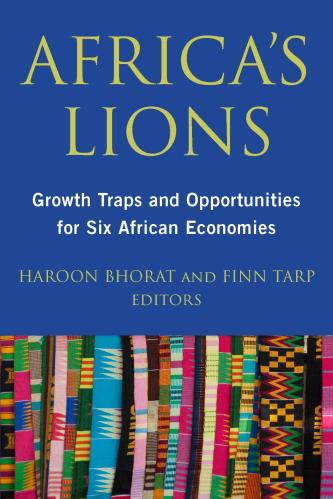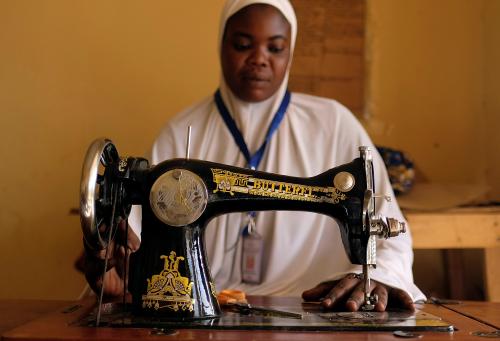Below is a viewpoint from Chapter 4 of the Foresight Africa 2018 report, which explores six overarching themes that provide opportunities for Africa to overcome its obstacles and spur inclusive growth. Read the full chapter on African structural transformation here.
Global value chains (GVCs), in which production crosses at least one border and usually more than one, now make up about two-thirds of global trade. GVCs are a key reason China has been able to increase its role in trade so quickly and pull a large number of workers out of agriculture into labor-intensive manufacturing. But now labor-intensive GVCs are starting to leave China because of China’s rising wages and move up the value chain. Much of the movement is to nearby Vietnam or Bangladesh. But some Chinese manufacturers are shifting production to Africa as well, especially to Ethiopia and other East African economies.
A second relevant matter concerns services. Mostly countries trade manufactured products. But when breaking down the value added in trade, services are playing a greater role and now account for about one-half of world trade. This trend reflects the importance of software in many “smart” products as well as the growing role of services in managing supply chains—services such as finance, telecom, and logistics. Many African economies are dualistic in that they have opened up to foreign trade and investment in manufacturing, but remain relatively closed in services. This is a losing strategy, as services are needed to participate in modern manufacturing. All of the services mentioned require careful regulation, but if done right, opening up to foreign investment in services can be an effective support to industrialization through GVC integration.
The first Global Value Chain Development Report had many findings relevant for developing countries that would like to increase their role in GVCs. African economies have lowered tariffs on manufacturing products, including parts and components, by 25 percent over the past decade. In Africa today, non-tariff trade costs generally are much higher than any remaining tariffs. These costs include delays with customs clearance, corruption, and infrastructure deficiencies. Importantly, in GVCs, trade costs cascade because products move across borders multiple times. At the moment, no countries with high trade costs play a significant role in GVCs, hence the importance of trade facilitation, customs reform, and infrastructure development. Of these areas, only South Africa compares favorably with East Asian economies, though some East African states are improving rapidly. In Ethiopia, a number of special zones have been set up to concentrate reform and infrastructure investment in a fixed number of locations. Special zones can be a good start but to have a large impact on the economy the benefits need to be spread to the whole country as soon as possible.








Commentary
Foresight Africa viewpoint – African economies and global value chains
January 19, 2018